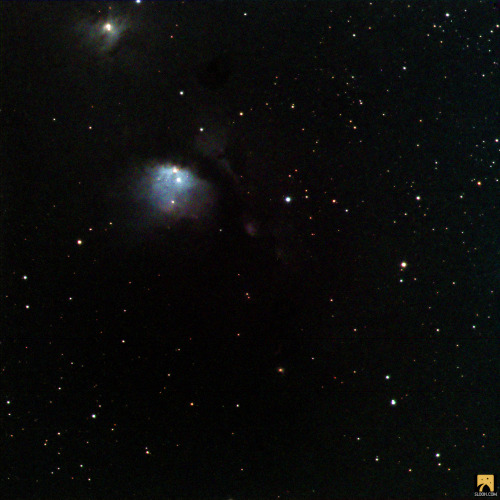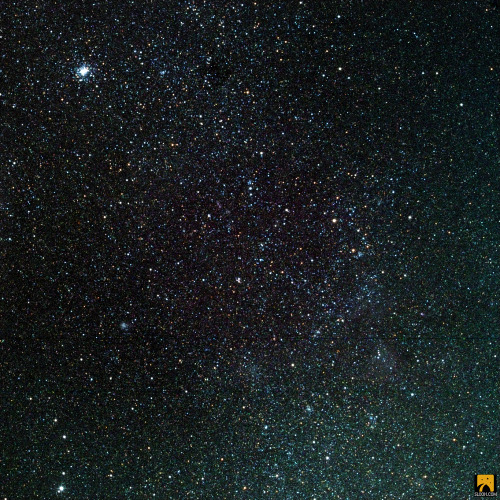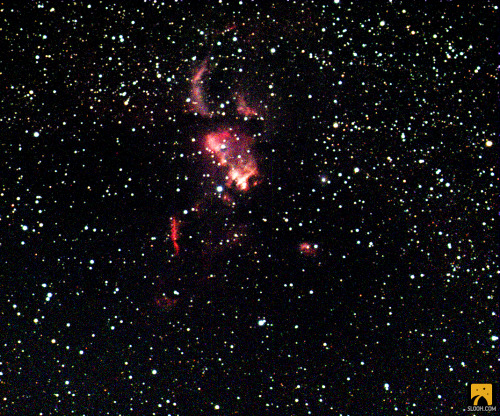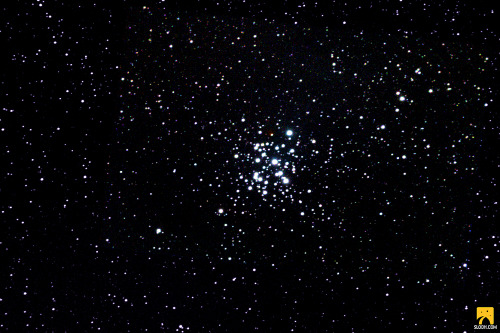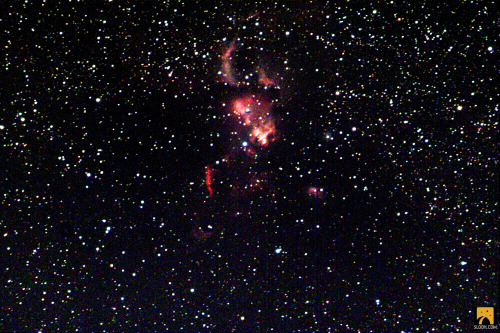#astroimages
This is the Crab Nebula!
This seemingly inert supernova remnant emits 75,000 times more energy than the Sun. Despite the neutron star in its center having a small diameter of 18 miles, it has a mass of 1.5 times the Sun!
Taken by me (Michelle Park) using the Slooh Canary One telescope on January 5th, 2022 at 21:12 UTC.
Post link
This is McNeil’s Nebula!
This beautiful nebula was discovered recently in 2004 and was found to be a variable nebula, likely because it is lit up by a variable star inside. However, mysteries still remain: in 2018, amateur astronomers thought that the nebula had disappeared! ✨✨✨
Taken by me (Michelle Park) using the Slooh Chile Two telescope on January 3rd, 2022 at 6:27 UTC.
Post link
This is Comet Leonard!
This beautiful comet is making its closest approach to Earth today, almost a year after it was first discovered by astronomer Greg Leonard. After this approach, the comet will be ejected out of the Solar System forever! ✨✨✨
Taken by me (Michelle Park) using the Slooh Chile Two telescope on January 3rd, 2022 at 1:07 UTC.
Post link
This is the Eight Burst Nebula!
The bright white dwarf at the center of this planetary nebula results in this rainbow glow from its intense ultraviolet radiation. The beautiful structure of this nebula is known to arise from the death of a Sun-like star, but its asymmetry draws questions to this day!
Taken by me (Michelle Park) using the Slooh Chile Two telescope on December 27th, 2021 at 05:03 UTC.
Post link
This is Comet Leonard!
This beautiful comet was discovered quite recently on January 3rd, 2021, being the first comet discovered this year. Nicknamed the “Christmas Comet”, this is the first time in 80,000 years and unfortunately the last time the comet will approach the inner solar system!
Taken by me (Michelle Park) using the Slooh Chile Two telescope on December 22nd, 2021 at 01:03 UTC.
Post link
This is 47 Tucanae! ✨✨✨
Considered to be one of the most massive star clusters in the Milky Way, this globular cluster is theorized to hold a black hole and a neutron star. With a diameter of 120 light years, this star cluster is the same size as the Full Moon in our night sky!
Taken by me (Michelle Park) using the Slooh Chile One telescope on December 18th, 2021 at 2:17 UTC.
Post link
This is the Small Magellanic Cloud!
The size and shape of this satellite galaxy makes it a dwarf and irregular galaxy. With its orbital partner, the Large Magellanic Cloud, the pair orbits the Milky Way once every 1.5 billion years and orbits each other once every 900 million years!
Taken by me (Michelle Park) using the Slooh Chile Two telescope on December 13th, 2021 at 2:55 UTC.
Post link
This is the Big Bear Pair!
This relatively unknown pair of galaxies is a beautiful sight in the Ursa Major constellation, also known as the Great Bear constellation. Although located a whopping 150,000 light years from each other, these two galaxies gravitationally interact with each other, creating an S-shape!
Taken by me (Michelle Park) using the Slooh Canary Two telescope on December 13th, 2021 at 1:17 UTC.
Post link
This is the Large Magellanic Cloud!
Despite being a satellite galaxy, the Large Magellanic Cloud (LMC) is the closest galaxy to our Milky Way and the 4th largest galaxy in our Local Group. This galaxy is full of vibrant stars, with many of them in the famous star-forming region called the Tarantula Nebula! ✨✨✨
Taken by me (Michelle Park) using the Slooh Chile Two telescope on December 13th, 2021 at 2:52 UTC.
Post link
This is NGC 3576!
Located 9000 light years away in the Eta Carinae Nebula, this nebula’s distinct shape has earned in the nickname “The Statue of Liberty Nebula”. Drifting through the Milky Way’s Sagittarius Arm, rampant star formation and ensuing stellar winds shape this beautiful collection of gas and dust!
Taken by me (Michelle Park) using the Slooh Canary Two telescope on December 8th, 2021 at 5:07 UTC.
Post link
This is LMC N49!
Considered to be the brightest supernova remnant in the Large Magellanic Cloud satellite galaxy, the center of this beautiful object holds a dead star. This neutron star has a strong magnetic field and gamma ray bursts that distinguish it as a “soft gamma repeater” star!
Taken by me (Michelle Park) using the Slooh Canary Two telescope on December 6th, 2021 at 1:08 UTC.
Post link
This is the Flame Nebula!
The vibrant clumps of gas in this nebula are assumed to be proplyds, which are disks of gas around young stars that may form planets. This appears to be common all throughout the Orion Molecular Cloud Complex, which not only includes the Flame Nebula but also other famous nebulae like the Horsehead Nebula and the Orion Nebula! ✨✨✨
Taken by me (Michelle Park) using the Slooh Chile Two telescope on November 23rd, 2021 at 1:58 UTC.
Post link
This is NGC 3293! ✨✨✨
This newly born cluster is made up of hot, young stars that are a mere 6 million years old. Located near the Carina Nebula, this beautiful star cluster floats in a dust lane that was the birthplace for these stars!
Taken by me (Michelle Park) using the Slooh Canary Two telescope on November 14th, 2021 at 5:32 UTC.
Post link
This is the Toby Jug Nebula!
This oddly shaped reflection nebula is composed of carbon, titanium dioxide, and calcium oxide dust. The interesting name Toby Jug comes from an old English drinking vessel that the discoverers of the nebulae drank out of when they were younger!
Taken by me (Michelle Park) using the Slooh Canary Two telescope on November 12th, 2021 at 2:47 UTC.
Post link
This is the North America Nebula!
Although the thick dust of this nebula makes it opaquely red, the use of infrared telescopes reveal a beautiful stellar landscape underneath. Stretching across 50 light years, this nebula contains thousands of young, hot stars that heat up the surrounding gas and make it emit its amazing colors!
Taken by me (Michelle Park) using the Slooh Canary One telescope on May 26th, 2022 at 4:33 UTC.
Post link
This is the Whirlpool Galaxy!
The vibrant colors are separated in this “astro-art” picture, giving us a unique view of this famous galaxy. As the first galaxy to be classified as a spiral galaxy, this majestic collision demonstrates how gravitational forces can tear apart and evolve galaxies!
Taken by me (Michelle Park) using the Slooh Canary One telescope on May 22nd, 2022 at 23:51 UTC.
Post link
This is the Lunar Eclipse of May 15th, 2022!
As the Earth’s shadow covers the Moon, it appears to disappear into darkness. This is just one of 85 lunar eclipses that will occur in the 21st century. If you missed this one, don’t worry! The next total lunar eclipse will occur on November 8th, 2022. ✨
Taken by me (Michelle Park) using the Slooh Canary One telescope on May 15th, 2022.
Post link
This is Centaurus A!
The center of Centaurus A has a supermassive black hole with a mass of 55 million solar masses! The sudden surge of star formation in this galaxy is likely due to it being created from a spiral galaxy and elliptical galaxy colliding together.
Taken by me (Michelle Park) using the Slooh Chile One telescope on March 29th, 2022 at 7:08 UTC.
Post link
This is the Statue of Liberty Nebula!
Located in the Carina arm of the Milky Way and at a distance of 9000 light years away, this towering nebula has 2 huge filaments filled with newborn stars. If you look carefully, you can see looping fragments shaped by the stellar winds of hot stars!
Taken by me (Michelle Park) using the Slooh Canary Two telescope on March 8th, 2022 at 2:07 UTC.
Post link
This is the Triangulum Galaxy!
Despite being a spiral galaxy, the Triangulum Galaxy has very little star formation as shown through infrared observations from the Wide-field Infrared Survey Explorer (WISE). However, a region known as NGC 604 is the largest stellar nursery between itself, the Milky Way, and the Andromeda Galaxy!
Taken by me (Michelle Park) using the Slooh Chile One telescope on March 8th, 2022 at 20:17 UTC.
Post link


